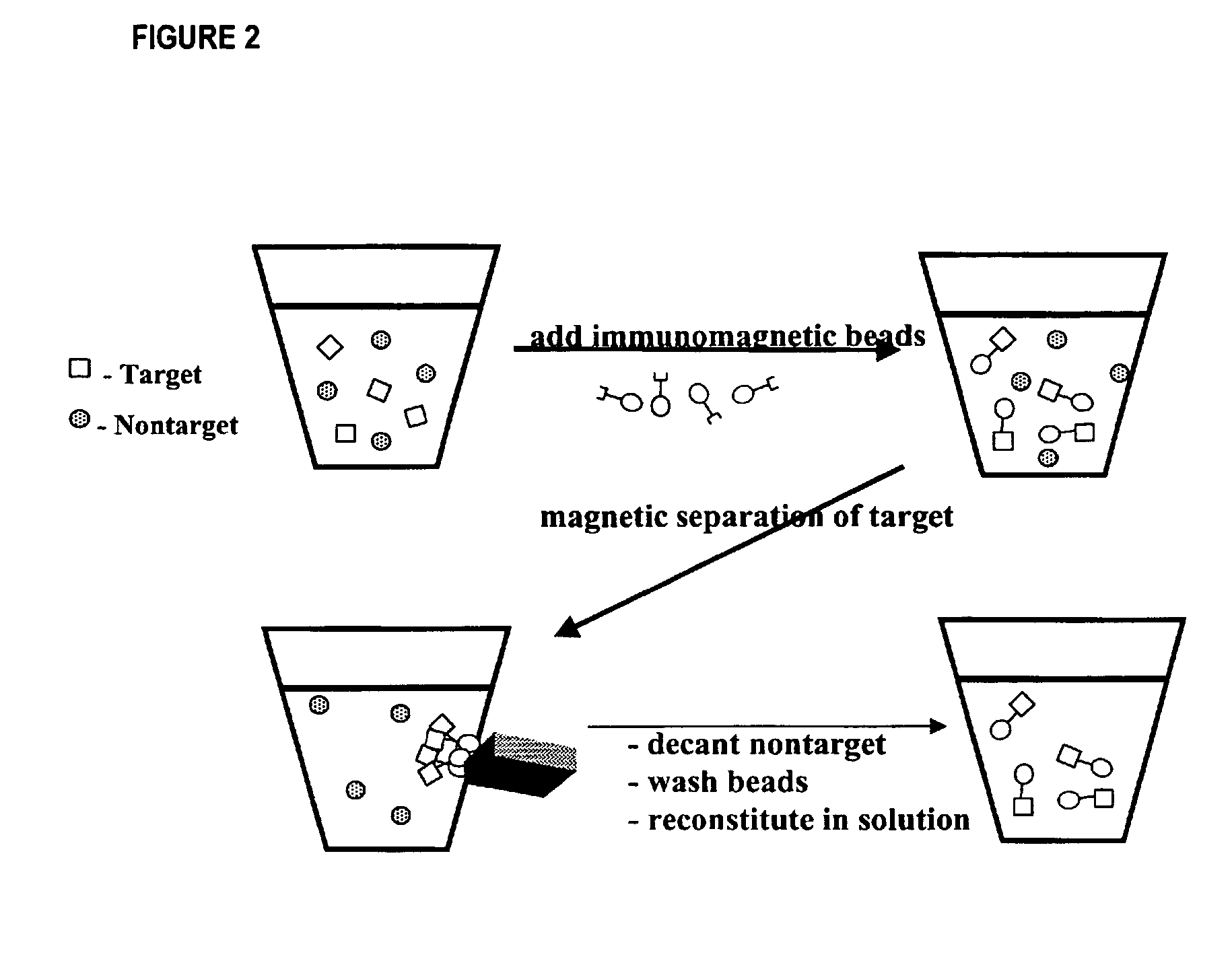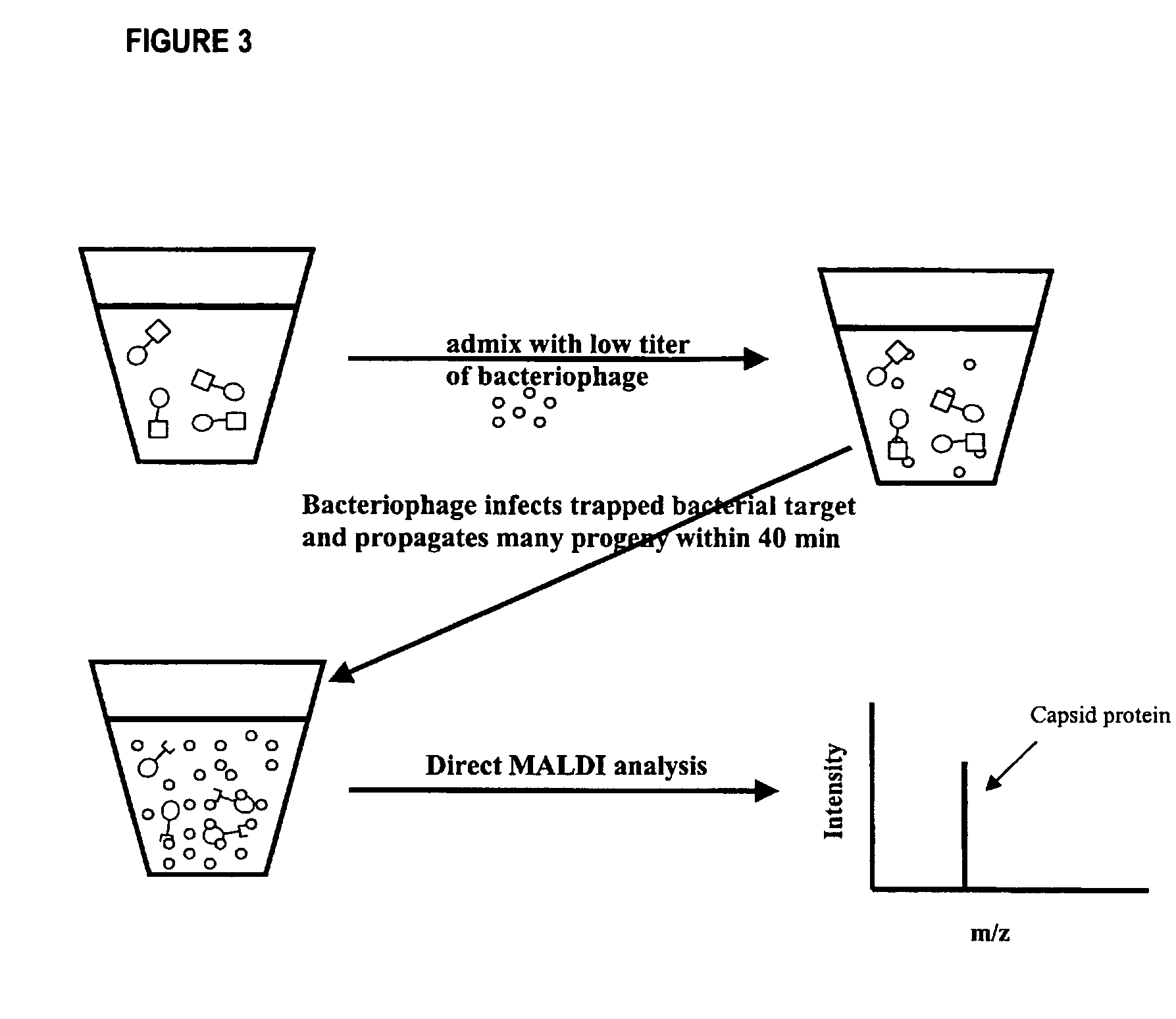Method for detecting low concentrations of a target bacterium that uses phages to infect target bacterial cells
a phage and target bacterium technology, applied in the field of detecting low concentrations of a target bacterium, can solve the problems of limiting the effectiveness of providing a rapid response, laborious operation, and taking 24 hours or longer
- Summary
- Abstract
- Description
- Claims
- Application Information
AI Technical Summary
Benefits of technology
Problems solved by technology
Method used
Image
Examples
example
[0041]As described hereinafter, an embodiment of the method has been used to reduce the detection limit for E. coli to less than 5.0×104 cells mL−1. The method used immunomagnetic beads coated with antibodies against E. coli, hereinafter referred to as the target-bead complex, to isolate the bacterium from solution. The target-bead complex was then re-suspended in a solution containing MS2, a bacteriophage that is specific for E. coli. The MS2 bacteriophage concentration was adjusted so that the ion signal from the capsid protein of the MS2 bacteriophage was below the detection limit of the mass spectrometer. After a 40-minute incubation period, an aliquot of the solution was removed and analyzed by the on-probe MALDI-TOF-MS procedure for the 13 kDa capsid protein. The [M+H]+ (m / z 13,726) and [M+2H]+2 (m / z 6865) ion signals for the MS2 capsid protein were detected (FIG. 4).
[0042]With reference to FIG. 5A, application of the process to a mixture that contains a concentration of 5.0×1...
PUM
 Login to View More
Login to View More Abstract
Description
Claims
Application Information
 Login to View More
Login to View More - R&D
- Intellectual Property
- Life Sciences
- Materials
- Tech Scout
- Unparalleled Data Quality
- Higher Quality Content
- 60% Fewer Hallucinations
Browse by: Latest US Patents, China's latest patents, Technical Efficacy Thesaurus, Application Domain, Technology Topic, Popular Technical Reports.
© 2025 PatSnap. All rights reserved.Legal|Privacy policy|Modern Slavery Act Transparency Statement|Sitemap|About US| Contact US: help@patsnap.com



